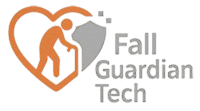Fall Prevention Guidelines for Older Adults: Core Requirements (US Adaptation)
Introduction
These guidelines synthesize evidence-based recommendations from leading authorities, including the American Geriatrics Society (AGS), the Centers for Disease Control and Prevention (CDC) STEADI initiative, and relevant clinical best practices. This framework provides standardized approaches for healthcare providers, community organizations, caregivers, and older adults.
1. Scope
This document outlines essential requirements for preventing falls, managing associated risks, and responding appropriately among adults aged 65 and older. It applies to clinical settings, community-based programs, home care, and individual use.
2. Key Definitions
- Patient-Specific Risk Factors: Individual characteristics increasing fall likelihood or severity. Includes age, sensory deficits, impaired balance/gait, cognitive impairment, specific medical conditions (e.g., Parkinson’s, neuropathy), medication side effects, substance use, and improper assistive device use.
- Environmental Hazards: Physical obstacles or unsafe conditions within living and activity spaces that contribute to fall risk (e.g., poor lighting, clutter, uneven surfaces, lack of grab bars).
- Comprehensive Fall Risk Assessment: Multifactorial evaluation identifying underlying causes and contributing factors to fall risk.
- Environmental Safety Assessment: Evaluation of the safety features within homes, community spaces, and healthcare facilities based on US accessibility standards (ADA, FHA).
- Therapeutic Exercise: Medically guided physical activity designed to improve strength, balance, flexibility, and endurance, tailored to individual capabilities and health status.
3. Core Requirements for Effective Fall Prevention
Effective fall reduction requires initial screening to identify high-risk individuals, followed by comprehensive multifactorial risk assessment.
3.1. Initial Fall Risk Screening
Annual screening is recommended for all adults aged 65+. Screen more frequently (e.g., every 6 months) if health status changes. Screen positive if ANY of the following is true:
- Two or more falls in the past year.
- Reports feeling unsteady, experiences difficulty with walking or balance (e.g., unsteady gait, near misses).
- Sought medical attention for a fall in the past year.
3.2. Comprehensive Multifactorial Risk Assessment for High-Risk Individuals
Individuals screening positive require detailed assessment including:
- Detailed fall history (circumstances, frequency, injuries)
- Medication review (prescription, OTC, supplements; focus on psychoactives, sedatives, anticholinergics, polypharmacy)
- Medical history review (acute/chronic conditions impacting fall risk)
- Gait, balance, and mobility evaluation (e.g., Timed Up & Go test, gait speed)
- Lower extremity muscle strength assessment (e.g., chair stand test)
- Visual acuity and contrast sensitivity screening
- Cognitive status screening (e.g., MoCA, Mini-Cog)
- Cardiovascular assessment (e.g., orthostatic vital signs for hypotension)
- Foot examination and footwear assessment
- Home and community environmental safety evaluation using standardized tools
- Assessment of functional ability and Activities of Daily Living (ADLs/IADLs)
- Psychological status assessment (fear of falling, depression)
- Review of assistive device use (appropriateness, fit, training)
3.3. Evidence-Based Fall Prevention Interventions
Targeted interventions should follow assessment findings:
- Tailored Exercise Programs: Prescribe programs focusing on balance, strength, and gait training. Evidence supports programs like:
- Structured group exercise (e.g., Otago Program, Matter of Balance)
- Tai Chi (proven efficacy for balance)
- Progressive resistance training
- Supervised balance exercises (static & dynamic, single-leg stance, perturbation training)
Frequency: Minimum 2-3 times per week for 30-60 minutes per session. Intensity should be moderate and individualized.
- Cognitive Interventions: Incorporate cognitive challenges into exercises or specific cognitive training activities for individuals with identified deficits. Consider evidence-based programs focusing on executive function and dual-task training.
- Environmental Modifications: Systematically identify and remediate hazards. Follow accessibility standards:
- Home: Use CDC Home Safety Checklists/FEAR checklist; install grab bars, improve lighting, remove tripping hazards, ensure secure railings.
- Community: Advocate for ADA compliance, safe walkways, adequate lighting, secure public transportation access.
- Healthcare Facilities: Comply with The Joint Commission standards (PC.01.02.07) for environmental safety and patient risk reduction.
- Medical Management:
- Medication Review & Deprescribing: Pharmacist-led review to reduce fall-risk drugs and minimize polypharmacy.
- Vitamin D Supplementation: Supplement Vitamin D3 (800-1000 IU/day or higher as clinically indicated) for insufficiency/deficiency to support muscle and bone health.
- Foot Care & Orthotics: Address foot problems and recommend appropriate, well-fitting footwear (low heels, firm soles, good support). Evaluate need for podiatry referral/prescription orthotics.
- Vision Correction: Ensure annual eye exams and correct refractive errors/cataracts. Educate on adjusting to new prescriptions.
- Manage Medical Conditions: Optimize treatment for conditions impacting fall risk (e.g., cardiovascular disease, neuropathy, arthritis, incontinence). Manage orthostatic hypotension.
- Education & Self-Management: Provide structured education on fall risks and prevention strategies (CDC’s Stopping Elderly Accidents, Deaths & Injuries – STEADI materials). Empower self-monitoring and action planning. Include caregiver education.
4. Post-Fall Protocols
Implement a standardized response to prevent recurrent falls:
- Acute Response:
- Conscious Individual: Do not move them immediately. Assess Airway, Breathing, Circulation (ABCs). Check for obvious injury. Inquire about symptoms (pain, LOC). Assist them up only if trained (e.g., using a lift), uninjured, and able to bear weight safely.
- Unconscious or Injured Individual: Call 911 immediately. Do not move the person unless in immediate danger. Provide supportive care until EMS arrives.
- Post-Fall Huddle/Assessment: Within 24-72 hours of a fall (in healthcare settings) or at next clinical visit (community/home), conduct a root cause analysis: Why did the fall happen? Document circumstances, symptoms, injuries, and potential contributing factors. Update the multifactorial risk assessment.
- Reassessment & Plan Revision: Modify the individual’s fall prevention care plan based on the post-fall analysis. Communicate changes to all relevant providers/caregivers.
- Technology Solutions: Promote Personal Emergency Response Systems (PERS) or fall detection technologies (e.g., automatic fall alert pendants/sensors) as part of a layered safety strategy, particularly for high-risk individuals living alone.
